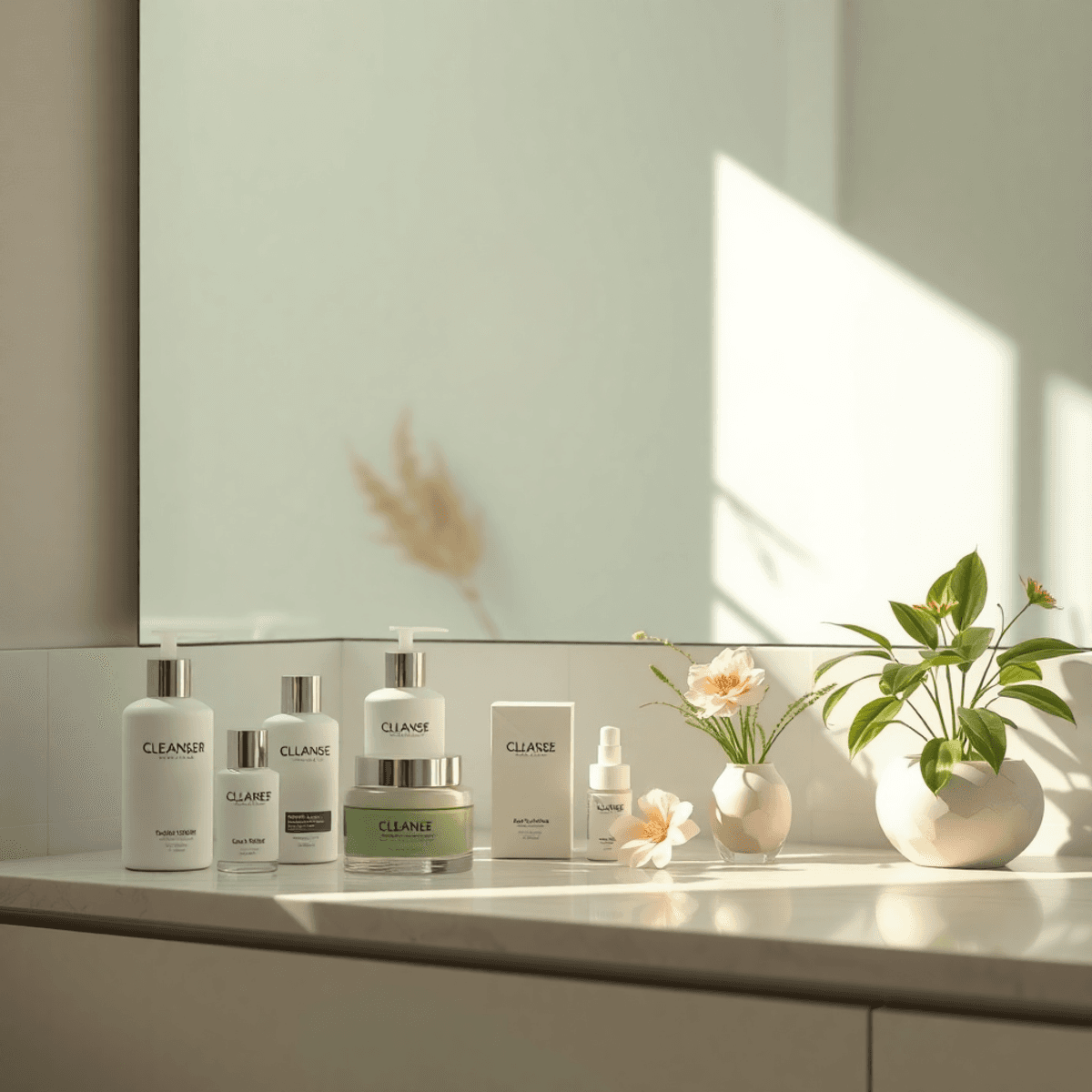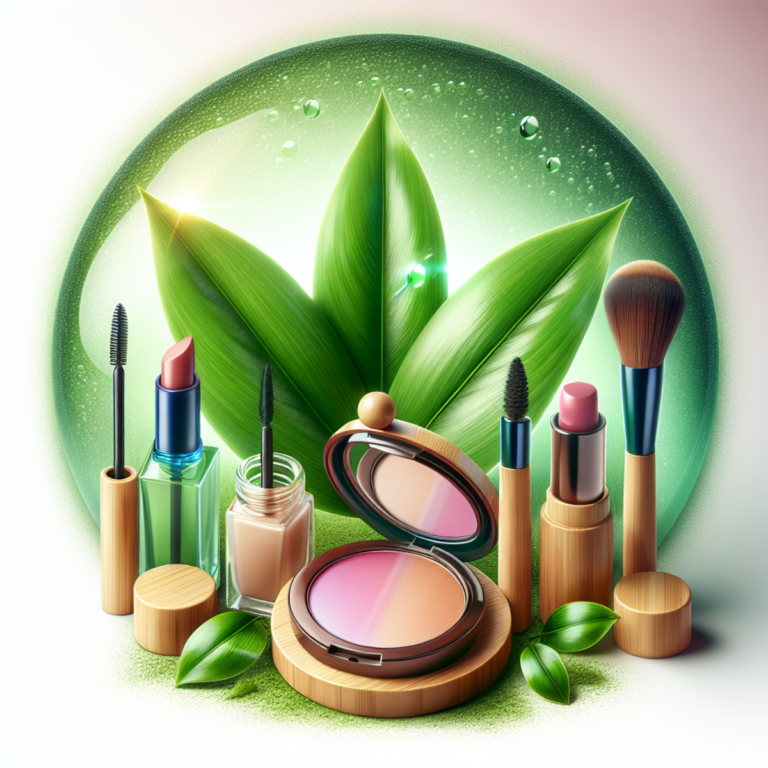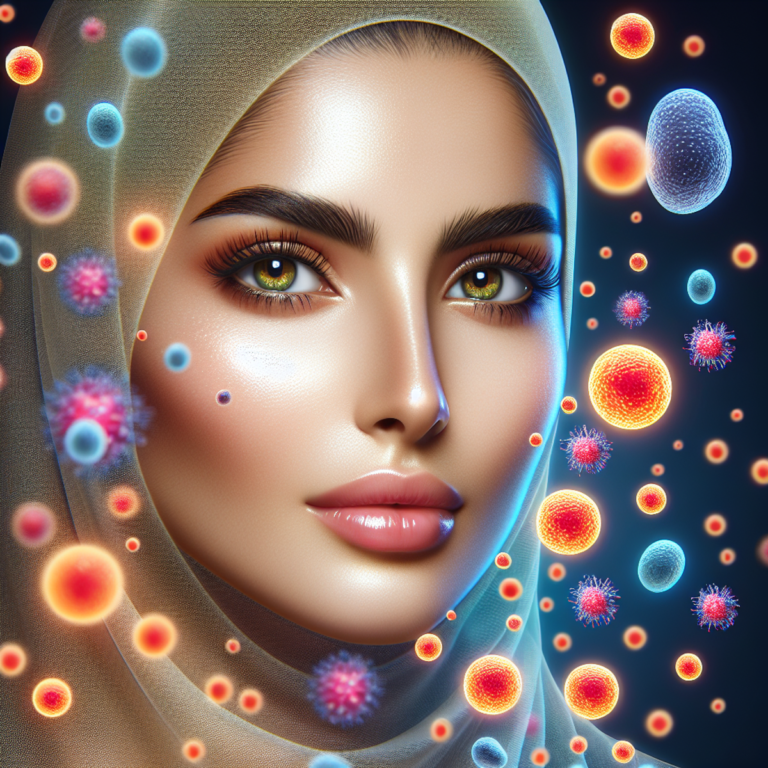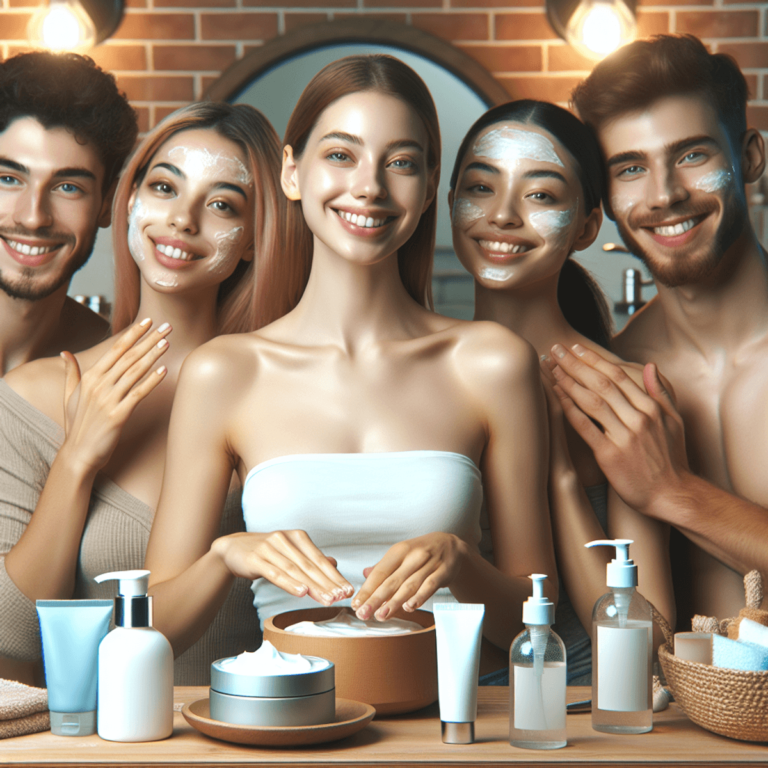How to prevent pimples

Introduction
Clear, healthy skin is something we all want, but pimples can be a problem for many people around the world. There are many reasons why we get pimples, such as changes in hormones or what we eat. That’s why it’s important to know how to prevent them as part of our skincare routine.
To prevent pimples, we need to understand what causes them:
- Too Much Oil: Sometimes, the glands in our skin produce too much oil, which can clog our pores.
- Bacteria Growth: There’s a type of bacteria called P. acnes that can grow in blocked pores and cause inflammation.
- Dead Skin Cells: When dead skin cells build up and mix with oil, it creates an environment where pimples can form.
- Hormonal Changes: Changes in hormone levels can also trigger breakouts.
- Environmental Factors: Things like pollution, humidity, and certain products can irritate our skin.
To prevent pimples, we need to take a holistic approach that tackles these underlying causes. This means having a consistent skincare routine and making changes in our lifestyle. By doing this, we can greatly reduce how often and how severe our breakouts are.
Whether you only get occasional spots or struggle with cystic acne, it’s better to focus on preventing new breakouts rather than just treating the ones you already have.
The first step towards achieving clear skin is prevention. This includes picking the right skincare products and being mindful about what we eat. In this article, we’ll discuss effective methods for keeping your skin clear and free from pimples.
Understanding Pimples and Their Causes
Pimples develop when hair follicles become clogged with oil, dead skin cells, and bacteria. This process creates small, inflamed bumps that can appear anywhere on your body, particularly on your face, chest, and back.
The formation of pimples follows a specific pattern:
- Oil Production: Your sebaceous glands produce sebum, an oily substance that lubricates your skin
- Pore Blockage: Dead skin cells mix with excess oil, creating a plug in your pores
- Bacterial Growth: P. acnes bacteria multiply within the blocked pore
- Inflammation: Your immune system responds, causing redness and swelling
Several key factors trigger acne formation:
Hormonal Changes
- Puberty-related hormonal shifts
- Menstrual cycle fluctuations
- Pregnancy hormones
- Polycystic ovary syndrome (PCOS)
Environmental Factors
- High humidity levels
- Air pollution
- Exposure to certain chemicals
- Heavy sweating during exercise
Dietary Influences
- High-glycemic foods
- Dairy products
- Processed foods
- Chocolate and sugary snacks
Lifestyle Elements
- Lack of sleep
- Poor skin hygiene
- Using comedogenic products
- Wearing tight clothing or equipment
Stress Impact
- Increased cortisol production
- Enhanced oil production
- Compromised immune system
- Slower skin healing
Your genetics play a significant role in determining your skin’s susceptibility to acne. Some people naturally produce more oil, while others have more sensitive skin that reacts strongly to bacteria and inflammation.
The severity of pimples varies from person to person:
- Mild: Small whiteheads and blackheads
- Moderate: Inflammatory papules
- Severe: Deep, painful nodules and cysts
Understanding these underlying causes helps create an effective prevention strategy tailored to your specific acne triggers.
Daily Skincare Routine for Prevention
A consistent skincare routine forms the foundation of pimple prevention. Your daily regimen should focus on gentle cleansing and proper hydration to maintain skin health.
Morning Routine
- Cleanse with lukewarm water using a gentle, pH-balanced cleanser
- Apply alcohol-free toner to balance skin pH
- Use a lightweight, non-comedogenic moisturizer
- Finish with broad-spectrum SPF 30+ sunscreen
Evening Routine
- Double cleanse to remove makeup and daily buildup
- Apply active ingredients (benzoyl peroxide or salicylic acid)
- Use non-comedogenic night cream
- Spot treat emerging breakouts
Key Components for Effective Cleansing
Gentle Cleansers
- Choose sulfate-free formulations
- Look for ingredients like glycerin or ceramides
- Avoid harsh scrubs or physical exfoliants
- Maintain water temperature between lukewarm and cool
Proper Cleansing Technique
- Use clean hands or fresh washcloth
- Massage cleanser in circular motions for 60 seconds
- Rinse thoroughly with clean water
- Pat dry with a clean towel
Moisturizing Strategy
Proper hydration plays a crucial role in preventing excess oil production. Select products labeled “non-comedogenic” to avoid pore blockage.
Recommended Moisturizer Ingredients:
- Hyaluronic acid
- Niacinamide
- Ceramides
- Glycerin
- Squalane
Application Tips:
- Apply to slightly damp skin
- Use gentle patting motions
- Focus on dry areas
- Wait 2-3 minutes between skincare steps
Weekly Treatments
Incorporate these treatments to maintain clear skin:
- Chemical exfoliation with BHA/AHA (1-2 times weekly)
- Clay mask for oil control
- Hydrating mask for barrier support
- Gentle physical exfoliation if needed
Treatment Guidelines:
- Space treatments 2-3 days apart
- Patch test new products
- Monitor skin response
- Adjust frequency based on sensitivity
Utilize Over-the-Counter Treatments Like Benzoyl Peroxide and Salicylic Acid
Over-the-counter acne treatments serve as powerful allies in your fight against breakouts. Two standout ingredients dominate the market: benzoyl peroxide and salicylic acid.
Benzoyl Peroxide
- Kills acne-causing bacteria
- Available in strengths from 2.5% to 10%
- Works best for inflammatory acne and pustules
- Start with lower concentrations to minimize irritation
- Apply a thin layer to affected areas
Salicylic Acid
- Penetrates deep into pores to remove debris
- Ideal for blackheads and whiteheads
- Typically found in concentrations of 0.5% to 2%
- Helps prevent future breakouts
- Can be used daily as part of your routine
These active ingredients work differently to target various types of acne:
Benzoyl peroxide releases oxygen into the pores, creating an environment where acne bacteria can’t thrive. Salicylic acid, a beta-hydroxy acid (BHA), dissolves the bonds between dead skin cells to unclog pores.
For best results:
- Apply treatments to clean, dry skin
- Use sunscreen during the day, as these ingredients can increase sun sensitivity
- Start with one treatment to assess your skin’s reaction
- Allow 4-6 weeks to see significant improvements
- Consider alternating between products to prevent skin irritation
Remember to patch test new products on a small area of skin before full application. If you experience persistent redness or irritation, reduce the frequency of use or switch to a lower concentration.
Lifestyle Changes to Support Acne Prevention
Your daily habits play a crucial role in maintaining clear, healthy skin. Simple lifestyle adjustments can create significant improvements in your skin’s appearance and reduce the frequency of breakouts.
Keep Your Hands Away from Your Face
- Set up reminders on your phone to track face-touching habits
- Use tissues or clean cotton pads when applying skincare products
- Rest your head on clean pillows instead of your hands
- Wear glasses instead of contacts to reduce eye-touching
Create a Clean Environment
- Change pillowcases twice weekly
- Sanitize phone screens daily
- Clean makeup brushes weekly
- Disinfect frequently touched surfaces
Maintain Personal Hygiene
- Tie back long hair to prevent oil transfer
- Use clean towels for face-drying
- Shower after sweating
- Keep hand sanitizer accessible
Reduce Contact Points
- Use speakerphone for calls
- Opt for wireless earbuds
- Keep hair styled away from face
- Choose non-irritating face masks
Break Common Habits
- Stop resting face on hands during work
- Avoid mindless face touching during reading
- Use stress balls for fidgeting
- Practice mindful awareness of face-touching
Professional Settings
- Position computer screens at eye level
- Use ergonomic chairs to prevent leaning
- Keep tissues readily available
- Place reminders at workstation
Exercise Considerations
- Wear sweatbands during workouts
- Use clean gym towels
- Remove makeup before exercising
- Cleanse face immediately post-workout
These lifestyle modifications create a foundation for clear skin by minimizing bacterial transfer and reducing skin irritation. The key lies in developing consistent habits that protect your skin throughout daily activities.
2. Opt for Minimal Makeup During Breakouts and Choose Non-Comedogenic Formulas When Applying Cosmetics
Your makeup choices play a crucial role in managing breakouts and preventing new pimples. Heavy makeup can trap bacteria, oil, and dead skin cells in your pores, leading to inflammation and acne flare-ups.
Essential makeup tips for acne-prone skin:
- Choose water-based foundations labeled “non-comedogenic”
- Avoid thick, creamy concealers that can clog pores
- Use mineral-based powder products for lighter coverage
- Clean makeup brushes weekly to prevent bacteria buildup
- Remove all makeup before bed, no exceptions
During active breakouts, give your skin time to heal by:
- Skipping foundation entirely for 2-3 days
- Using spot treatments only on affected areas
- Applying tinted moisturizer instead of full coverage products
- Focusing on eye makeup rather than face products
Look for these acne-safe ingredients in your makeup:
- Zinc oxide
- Titanium dioxide
- Silica
- Mica
- Iron oxides
Avoid these potential pore-cloggers:
- Mineral oil
- Lanolin
- Isopropyl myristate
- Artificial dyes
- Added fragrances
Your skin needs breathing room to heal. Consider makeup-free days as an investment in your skin’s long-term health. When you do wear makeup, choose products specifically formulated for acne-prone skin and apply them with clean hands or freshly washed brushes.
3. Be Mindful of Hair Products That May Clog Pores on the Forehead or Face Area and Consider Switching to Lighter Alternatives
Your hair products might be the hidden culprit behind those stubborn forehead breakouts. Heavy styling products, including oils, pomades, and leave-in conditioners, can transfer onto your skin and block pores, leading to acne formation.
Common problematic ingredients in hair products:
- Mineral oil
- Petroleum
- Silicones
- Synthetic waxes
- Heavy butter-based ingredients
To protect your skin from product-induced breakouts:
- Apply hair products strategicallyKeep styling products at least 1 inch away from your hairline
- Style your hair before washing your face
- Use a protective headband during product application
- Choose skin-friendly alternativesWater-based styling products
- Lightweight serums
- Non-comedogenic hair oils
Quick tips for prevention:
- Wash pillowcases frequently to remove product buildup
- Pin back bangs during sleep or workouts
- Shield your face when using hair sprays
- Clean hair brushes regularly to prevent product accumulation
If you notice persistent forehead breakouts, try switching to lighter hair care alternatives for 2-3 weeks. This change allows you to determine if your hair products are triggering your acne concerns.
4. Stay Hydrated and Eat Skin-Friendly Foods for Healthy Skin
Your skin’s health directly reflects what you put into your body. Water consumption plays a vital role in maintaining clear, healthy skin by:
- Flushing out toxins from your system
- Keeping skin cells hydrated and plump
- Supporting natural detoxification processes
- Reducing inflammation that can trigger breakouts
Optimal Daily Water Intake:
- 8-10 glasses of water
- Herbal teas
- Fresh coconut water
- Cucumber-infused water
Skin-Friendly Foods to Include:
- Antioxidant-rich fruits: berries, citrus fruits, pomegranates
- Leafy greens: spinach, kale, Swiss chard
- Healthy fats: avocados, nuts, seeds
- Zinc-rich foods: pumpkin seeds, quinoa
- Omega-3 sources: fatty fish, chia seeds
Foods to Limit:
- Processed snacks
- Refined sugars
- Dairy products
- Deep-fried foods
- Artificial sweeteners
A balanced diet rich in whole foods supports your skin’s natural healing processes. Creating a food diary can help identify specific triggers that cause breakouts. Your skin needs proper nutrients to maintain its protective barrier and fight off acne-causing bacteria. Combining proper hydration with nutrient-dense foods creates an internal environment that promotes clear, healthy skin.
Regular physical activity plays a crucial role in maintaining clear, healthy skin. Exercise increases blood circulation, delivering essential nutrients and oxygen to skin cells while flushing out toxins through sweat.
Key Exercise Benefits for Skin Health:
- Reduces cortisol levels – the stress hormone linked to acne breakouts
- Promotes collagen production for skin repair
- Regulates hormone levels that can trigger excess oil production
- Enhances natural detoxification through sweating
You can incorporate these skin-friendly workout routines:
- 30-minute brisk walking
- Yoga sessions
- Swimming
- Light jogging
- Dancing
Post-Workout Skincare Tips:
- Cleanse your face immediately after exercising
- Use a gentle, non-comedogenic face wash
- Pat skin dry with a clean towel
- Apply oil-free moisturizer
For optimal results, aim for 150 minutes of moderate exercise weekly. Schedule workouts during cooler hours to prevent excessive sweating that might irritate sensitive skin. Remove makeup before exercising to allow your skin to breathe and prevent clogged pores.
Remember to wear loose, breathable clothing during workouts to minimize friction and bacteria buildup. Sports headbands can prevent hair products and sweat from dripping onto your face, reducing the risk of forehead and temple breakouts.
Exercise combined with proper skincare creates a powerful defense against acne formation while promoting a healthy, glowing complexion.
Managing Stress for Clearer Skin: Techniques You Can Try at Home Like Yoga or Meditation Practice
Stress triggers hormonal changes that can lead to increased sebum production and inflammation, resulting in unwanted breakouts. Your skin’s health reflects your mental state, making stress management crucial for maintaining clear skin.
Effective At-Home Stress Management Techniques:
1. Deep Breathing Exercises
- Practice 4-7-8 breathing: Inhale for 4 counts, hold for 7, exhale for 8
- Set aside 5-10 minutes twice daily for focused breathing
- Use breathing apps to guide your practice
2. Meditation for Skin Health
- Start with guided meditation apps
- Create a quiet space for daily practice
- Begin with 5-minute sessions, gradually increasing duration
- Focus on body scanning to release facial tension
3. Yoga Poses for Stress Relief
- Child’s pose
- Cat-cow stretches
- Forward folds
- Legs up the wall
Additional Stress-Reducing Activities:
- Take regular breaks from screens
- Practice mindful walking in nature
- Listen to calming music or nature sounds
- Keep a gratitude journal
- Create art or engage in crafts
Creating a Stress Management Routine:
- Choose 2-3 techniques that resonate with you
- Schedule specific times for practice
- Start with short sessions (5-10 minutes)
- Track your stress levels and skin changes
- Adjust techniques based on what works best
Remember to maintain consistency with your chosen stress management practices. Your skin needs time to respond to reduced stress levels, so stick with your routine for at least 4-6 weeks to see noticeable improvements in your complexion.
When To Seek Professional Help From A Dermatologist
Your skin deserves expert care when over-the-counter treatments aren’t delivering results. Here are clear signs it’s time to consult a dermatologist:
- Acne persists for more than 3 months despite consistent home treatment
- Deep, painful cysts or nodules develop under the skin
- Scarring begins to occur from existing breakouts
- Your self-esteem is significantly affected by your skin condition
Professional Treatment Options
Dermatologists can prescribe powerful treatments unavailable over the counter:
- Topical Prescriptions
- Tretinoin (Retin-A)
- Adapalene
- Antibiotics like clindamycin
- Combination medications
- Oral Medications
- Antibiotics for severe bacterial inflammation
- Hormonal treatments like birth control
- Isotretinoin for resistant cystic acne
- In-Office Procedures
- Chemical peels
- Light therapy
- Extractions
- Cortisone injections for cystic breakouts
Your dermatologist will create a personalized treatment plan based on:
- Your skin type
- Acne severity
- Previous treatment history
- Lifestyle factors
- Medical history
Many insurance plans cover dermatology visits for acne treatment. Schedule an appointment if you notice your acne:
- Leaves dark spots or scars
- Affects areas beyond your face
- Flares up despite lifestyle changes
- Causes physical discomfort
A dermatologist can identify underlying causes and recommend targeted solutions for long-term skin health.
Breaking Bad Habits for Better Skin Health
Your journey to clear skin can be disrupted by common yet harmful habits. Let’s discuss these mistakes and discover dietary strategies for achieving optimal skin health.
Don’t Pop Those Pimples!
- Squeezing pimples creates micro-tears in your skin
- Bacteria spreads to surrounding areas, causing new breakouts
- Dark spots and permanent scarring can develop
- Natural healing takes 3-7 days without interference
Sun Protection is Non-Negotiable
- UV rays increase inflammation in existing acne
- Sun exposure darkens post-acne marks
- Apply broad-spectrum SPF 30+ daily
- Choose oil-free, non-comedogenic sunscreens
The Food-Skin Connection
An elimination diet can help identify your personal acne triggers:
- Remove common trigger foods:
- Dairy products
- Refined sugars
- Processed foods
- High-glycemic carbohydrates
- Reintroduce foods one at a time:
- Wait 3-4 days between new foods
- Document skin reactions
- Note timing of breakouts
Skin-Supporting Foods
Include these foods in your diet for healthier skin:
- Omega-3 rich fish
- Leafy greens
- Zinc-containing nuts
- Antioxidant-rich berries
- Probiotic-rich foods
Quick Tips for Emergency Breakouts
When you experience an unexpected breakout, try these quick remedies:
- Ice wrapped in cloth reduces inflammation
- Spot treat with tea tree oil
- Apply aloe vera gel
- Use hydrocolloid patches overnight
Remember: treating acne requires patience. Quick fixes often cause more harm than good. Focus on consistent skincare habits and pay attention to how your diet affects your skin. Track your progress with photos every few weeks to identify patterns and improvements in your skin’s condition.
FAQs (Frequently Asked Questions)
What are the common causes of pimples?
Pimples can be triggered by various factors including hormonal changes, diet, stress, and the presence of bacteria on the skin. Understanding these triggers is essential for effective acne prevention.
How can I prevent pimples effectively?
To prevent pimples, maintain a consistent skincare routine that includes using a gentle cleanser, moisturizing with non-comedogenic products, and utilizing over-the-counter treatments like benzoyl peroxide or salicylic acid. Additionally, avoid touching your face excessively and opt for minimal makeup during breakouts.
What is the significance of using non-comedogenic moisturizers?
Non-comedogenic moisturizers are important as they do not clog pores or contribute to acne formation. They help maintain a healthy skin barrier while providing necessary hydration to the skin.
What lifestyle changes can support acne prevention?
Lifestyle changes that can support acne prevention include avoiding excessive touching of your face to minimize bacteria transfer, opting for minimal makeup during breakouts, and choosing non-comedogenic formulas when applying cosmetics.
How can I get rid of pimple marks?
To remove pimple marks, consider using natural remedies or over-the-counter treatments designed to lighten scars. Regular exfoliation and maintaining a good skincare routine can also help in fading these marks over time.
What over-the-counter treatments are effective for reducing breakouts?
Popular over-the-counter treatments such as benzoyl peroxide and salicylic acid work by targeting acne-causing bacteria and helping to unclog pores. Consistent use as part of your skincare routine can significantly reduce breakouts.









